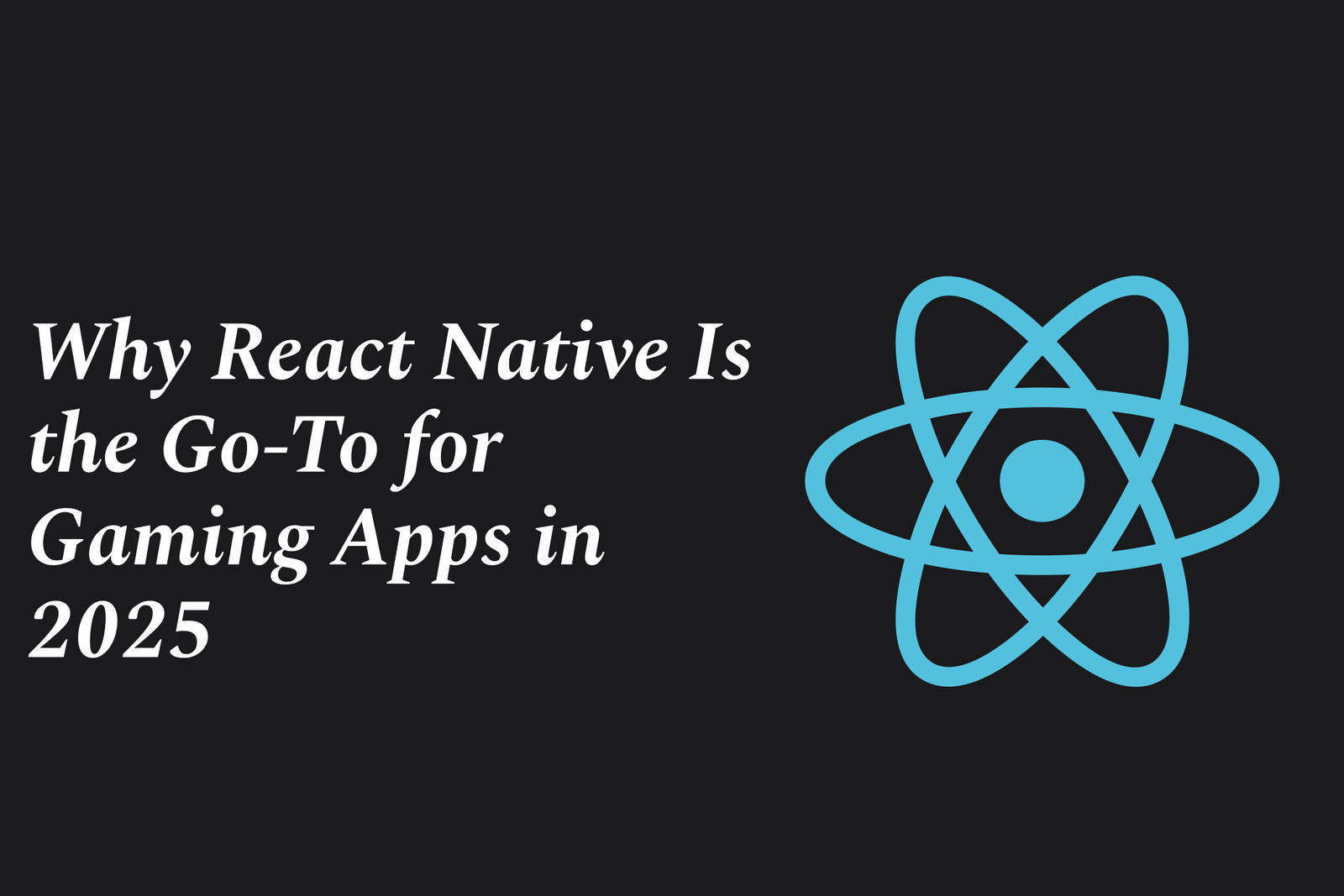Why react native is the go-to for gaming apps in 2025
React Native is the go-to for gaming apps in 2025 because it enables fast, cross-platform development with near-native performance, rich native integrations, and a strong ecosystem—delivering cost-effective, scalable, and feature-rich mobile gaming experiences across iOS and Android.
Why React Native Is the Go To for Gaming Apps in 2025
1 ) Cross Platform Development Efficiency
React Native continues to be favored for building gaming apps in 2025 due to its ability to streamline development across multiple platforms like iOS and Android. This cross platform compatibility reduces time and resource expenditure, allowing developers to write a single codebase that works seamlessly on different devices.
2 ) Performance Improvements
With ongoing enhancements to React Native’s architecture, gaming apps built on this framework are achieving near native performance. Optimized rendering and faster load times contribute to a smooth user experience, which is critical for gaming applications.
3 ) Rich Ecosystem and Community Support
React Native benefits from a robust ecosystem of libraries and tools that accelerate game development. An active developer community ensures continuous improvements, bug fixes, and innovative solutions that support gaming app needs.
4 ) Integration with Native Modules
React Native allows easy integration with native components and third party modules. This flexibility enables game developers to implement advanced graphics, complex animations, and hardware accelerated features necessary for immersive gaming experiences.
5 ) Cost Effectiveness and Scalability
By consolidating development efforts and easing maintenance challenges, React Native lowers overall project costs. Its scalability supports the growing complexity and user base of gaming apps in 2025.
6 ) Support for Modern Gaming Features
React Native’s architecture accommodates integration with APIs for multiplayer functionality, cloud gaming, AR/VR support, and real time updates, making it suitable for the latest trends in mobile gaming.
Summary:
React Native remains the preferred choice for gaming apps in 2025 due to its efficient cross platform development, improved performance, extensive ecosystem, seamless native integration, cost effectiveness, and support for modern gaming capabilities. These advantages make it the go to framework for developers aiming to deliver high quality mobile gaming experiences.
https://justacademy.in/news-detail/react-native-vs-flutter-2025:-the-battle-heats-up-again
https://justacademy.in/news-detail/android-new-api-releases
https://justacademy.in/news-detail/flutter-layout-grid-system-update
https://justacademy.in/news-detail/how-react-native-is-dominating-e-commerce-in-2025
https://justacademy.in/news-detail/flutter-typography-system-explained
Related Posts
Java supports GDPR and data privacy by enabling secure data handling through encryption, controlled access, and precise data management. It allows developers to minimize PII exposure, ensure data confidentiality, and design workflows that comply with data protection regulations effectively.
Java code quality tools have evolved to include advanced static analysis, integrated security checks, and AI-powered code reviews. These updates help developers detect bugs, enforce coding standards, and enhance security, streamlining the development process and improving overall code reliability.
Java remains a cornerstone in big tech companies, evolving with modern features like records, pattern matching, and virtual threads. Its robust ecosystem, enhanced performance, and growing AI integrations keep it vital for both legacy systems and innovative new projects.
Java and CI/CD pipeline optimizations streamline Java application development by automating builds, tests, and deployments. They improve efficiency through parallelization, caching, and secure secrets management, enabling faster feedback loops and more reliable, scalable software delivery.
Java supports modern cryptography standards through its flexible Java Cryptography Architecture (JCA), enabling integration of advanced algorithms like AES, EdDSA, and post-quantum tools. Libraries like Bouncy Castle offer FIPS-certified, hardware-accelerated implementations for secure development.
Java 23 enhances record patterns by enabling concise, direct destructuring of record components within pattern matching, simplifying type checks and data extraction. This improvement boosts code readability and expressiveness by reducing boilerplate in handling immutable data classes.
Java remains a top choice for mobile app backends, powering scalable, secure, and high-performance server-side solutions. Latest trends include cloud-native microservices, reactive programming, and enhanced JVM optimizations, enabling efficient, flexible, and robust mobile backend development.
Java SE 24 and LTS Java SE 21 offer enhanced features and performance, while Apache Spark 4.0.0 introduces Scala 2.13 support and advanced ML and SQL capabilities. Together, they empower developers to build scalable, high-performance data applications with modern tools.
JUnit 5 modernizes Java testing with a modular architecture, improved assertions, and seamless Java 8+ support. Beyond JUnit, tools like Mockito and AssertJ enhance mocking and assertions, creating a powerful, flexible ecosystem for writing clean, efficient Java unit tests.
Java plays a pivotal role in cloud automation tools by providing a robust, platform-independent language used to build scalable automation frameworks like Jenkins and Selenium, enabling efficient CI/CD pipelines, testing, and orchestration across diverse cloud environments.










